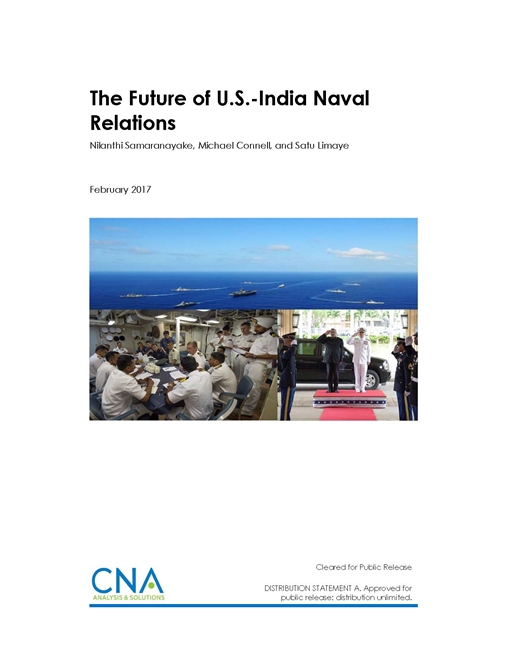Washington’s relations with New Delhi have soared to new heights. President Barack Obama became the first U.S. president to visit India twice during an administration, and Prime Minister Narendra Modi has made four official visits to the United States. Their bonhomie impacted defense relations, driving them upward and setting the pace for this cooperation throughout their governments. Given Washington’s rising equities and threat perceptions in the Indo-Pacific region, the Obama administration signaled the priority it attaches to the U.S. strategic relationship with India in various U.S. Department of Defense (DOD) documents.
Within this context, this CNA study determines how the United States can further advance its naval relationship with India in the coming five to 10 years, given the leading role of the U.S. Navy (USN) in advancing U.S. defense cooperation with India for roughly two decades. This work studies the key factors that have shaped the course of USN-Indian Navy relations to date and considers India’s possible future trajectories, in order to reach judgments on how they may impact bilateral naval ties.
CNA finds that there are several factors that both limit and create possibilities for the USN-Indian Navy relationship. They can be sub-divided into strategic level and operational level. The strategic-level factors are: the role of China and Pakistan; ideology and Indian party politics; personalities; and black swans. The operational- level factors are: Indian bureaucracy and civil-military legacies; the U.S. defense foundational agreements; diverging stances on military activities in exclusive economic zones (EEZ) and freedom of navigation operations; and general capacity constraints that impact the Indian Navy. This study concludes that, while these factors affect the evolution of the USN-Indian Navy relationship, they are mostly beyond the control of the navies themselves. This does not mean that they cannot engage each other during dips in the overall relationship; it means only that the two navies should continue to acknowledge the larger context in which they must be prepared to work.
Our study envisions four strategic trajectories that India may take in the next five to 10 years and draws implications for USN-Indian Navy cooperation. Elements of all four trajectories may certainly be present at any given time, but these archetypes are intended to depict the predominant themes of India’s potential futures that may impact USN security cooperation with the Indian Navy. They are:
- Baseline trajectory: continuation of the current, incremental growth in India’s economic and military capabilities
- Alternate trajectory 1: renewed focus on Pakistan and land-based threats
- Alternate trajectory 2: Monroe Doctrine in the Indian Ocean
- Alternate trajectory 3: increased tensions with China.
Despite the outcomes of these potential futures for overall U.S.-India relations, the USN and Indian Navy can work together effectively given their shared interests across multiple missions. Finally, this study draws on the findings of an accompanying project paper to highlight the increasing importance of India’s “West”—i.e., the western Indian Ocean region—as an area critical to India’s national interests. This suggests possibilities for USN-Indian Navy cooperation that are outside the traditional U.S. Pacific Command (PACOM) area of responsibility (AOR), but may advance the U.S. naval relationship with India.
Download reportDISTRIBUTION STATEMENT A. Approved for public release: distribution unlimited.
Details
- Pages: 52
- Document Number: drm-2016-u-013938-final2
- Publication Date: 2/1/2017
